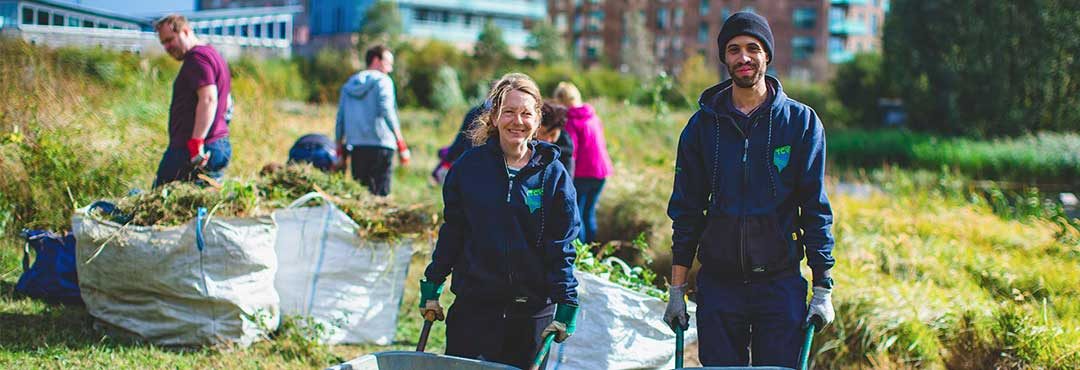Stave Hill Ecological Park is managed by TCV’s Urban Ecology team as a nature reserve, educational facility, research area and place of recreation. The Park has been designed and managed to form a mosaic of grassland, woodland, scrub and wetland habitats which support a wide variety of wildlife.
This mosaic of habitats have been created from scratch by sowing and planting the poor soil. In some places it has been improved or altered by the addition of sand, spent mushroom compost and a variety of mulches. The Park is intensively managed to conserve the wide variety of wildlife that colonised the area during the years the docks lay derelict and provide a haven for some of the species that lived here before humans so changed the land.
Volunteering at Stave Hill
Volunteers are always welcome at Stave Hill. Tasks are fun, varied and will suit all abilities. Children are welcome but must be supervised by a parent or guardian. Tea, coffee and biscuits supplied.
The Stave Hill Volunteers meet on the second Saturday of the month, 11am-3.30pm.
The Stave Hill Regulars meet every Wednesday, 10am-4pm
Volunteers may do a half or full-day. We meet up at the Green Portakabin, behind Bacon’s College.
For further information, or to be included in the mailing list, please email Rebeka Clark on r.clark@tcv.org.uk or telephone 0207 237 9175
Contact, Access and Opening Details
The Park is open to the public at all times and has a full-time warden. Visitors can enter from Russia Dock Woodland or from entrances around Stave Hill.
Our Office is the Green portacabin behind Bacons College car park (the College Gates are usually closed so it is easiest to walk round). Nearby bus routes are 1, 225 & 381, 395.
Stave Hill Ecological Park can be found:
Behind Bacons College,
Timber Pond Road in Rotherhithe,
London, SE16 6AX.
The site Warden is Rebeka Clark
Telephone: 020 7237 9175
Email: r.clark@tcv.org.uk
Site History
Stave Hill Ecological Park is a 5.2-acre nature area located on the site of Stave Dock in the centre of the former Surrey Commercial Dock, a few minutes walk from historic Rotherhithe and just over the river from Canary Wharf. The site was offered to the Trust for Urban Ecology in early 1984 by the London Docklands Development Corporation as a replacement for the William Curtis Ecological Park, Britain’s first urban nature park. Landscaping work began in 1986 and the park was handed over to the Trust in 1988.
The UK’s major timber port, Surrey Docks operated from the 1860s to the early 1970s when much of the area became derelict. Most of the docks and timber ponds (large areas of water where timber was kept to season) were filled in with domestic waste, rubble and subsoil from all over London. Some of this was re-excavated as the area was redeveloped and, together with subsoil elsewhere, provided the material that was landscaped to create the park and the adjacent Stave Hill viewing point. The extent of the old docks can be seen on the plaque displayed on the top of Stave Hill, from which you can see much of London, and this aspect of the area’s history is kept alive in the names of new streets, housing developments and open spaces: Lavender Pond, Russia Dock Woodland and Canada Water.
Before the docks were built, the area was mainly pastureland and, before that, it was a wilderness of water, marshes, reedbeds, Alder, Poplar and Willow carrs inhabited mainly by birds, insects and a few hardy wildfowlers and fishermen.

